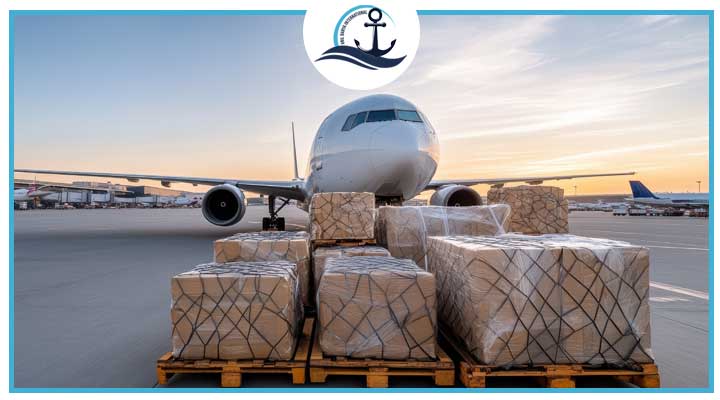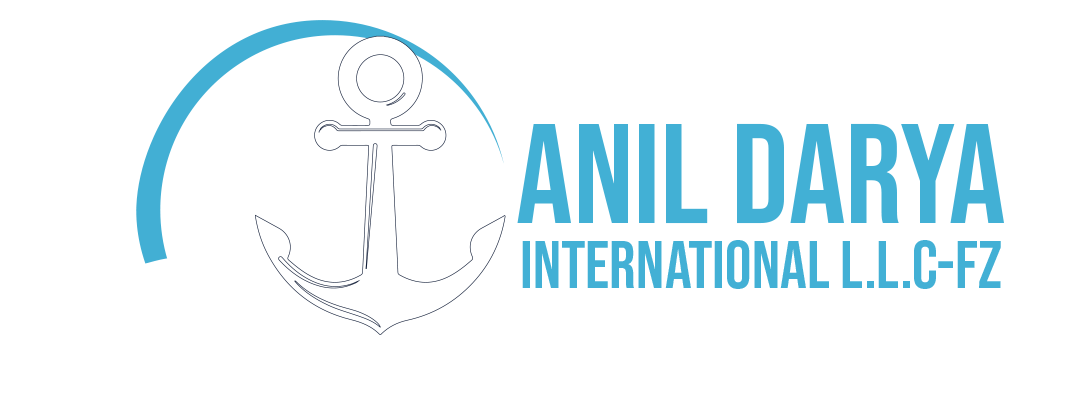

Air Freight: The Fastest Way for International Trade
In the fast-paced world of global trade, time is no longer just a number on the clock; it directly translates into profit or loss for companies and traders. Every day of delay in importing or exporting goods can disrupt the supply chain and create significant financial costs. In such circumstances, air freight stands out as the fastest and most reliable method of transporting goods internationally.
Today, many trading companies, importers, and exporters choose air freight to deliver their goods quickly and securely to customers. This method not only ensures high speed but also guarantees the safety of shipments.
What Is Air Freight?
Air freight is the process of transporting shipments using cargo or even passenger aircraft from one country to another. This method stands in contrast to sea and land freight, which usually take longer.
From small and lightweight packages to large and valuable shipments, all can be delivered by air. The main difference lies in the fact that air freight is calculated based on chargeable weight — meaning both volume and weight are considered when determining the cost.
For traders engaged in import and export, air freight is usually chosen when:
- The goods are sensitive or valuable.
- Delivery time is critical.
- The geographical destination is far away.
Advantages of Air Freight


1. Unmatched Speed
The most important advantage of air freight is its speed. While shipping a container by sea from China to Iran can take three to five weeks, the same cargo transported by plane will reach its destination within three to seven days. This feature is essential for perishable goods such as pharmaceuticals, food products, or fresh flowers.
2. High Security
Airports and airlines have extremely strict standards regarding cargo security. Shipments are inspected before loading, and the risk of theft or damage during transport is very low. For this reason, traders often use air freight to transport high-value goods such as gold, jewelry, or sensitive electronic components.
3. Real-Time Tracking
One of the modern benefits of air freight is the ability to track shipments online. With an Air Waybill (AWB), cargo owners can monitor the location of their goods at every stage. This transparency provides peace of mind to traders.
4. Flexibility in Cargo Size
From small parcels to several-ton shipments, all can be transported by air. This flexibility allows both large corporations and small businesses to benefit from air freight services.
5. Transporting Special and Sensitive Goods
Sensitive goods such as medicine, medical equipment, or electronic components often require special storage conditions. Modern cargo planes are equipped with systems to control temperature and environmental conditions. Even in certain cases, dangerous goods can also be transported by air in compliance with IATA standards.
Comparing Air Freight with Other Modes
Air Freight vs. Sea Freight
Speed: Sea freight is cheaper but can take weeks, while air freight is much faster but more expensive.
Type of Goods: Sea freight is ideal for bulky, heavy cargo, whereas air freight is the better option for sensitive and valuable goods.
Flexibility: Many logistics companies combine air and sea freight to optimize both cost and time.
Air Freight vs. Land Freight
- Land transport is usually more economical for neighboring countries.
- However, when the destination is in another continent, air freight becomes the only fast and practical option.
- This comparison shows that each method has its place, but in today’s fast-paced world, air freight delivers the greatest value for urgent and high-priority goods.
The Air Freight Process
For many traders, the air freight process may seem complicated, but when working with a specialized company, everything becomes simple and transparent.
Main Stages of Air Freight:
Order Placement
AWB Issuance
Standard Packing
Cargo Delivery
Loading & Dispatch
Customs Clearance
1-Order Placement and Initial Consultation
The customer shares shipping requirements, and the company’s experts recommend the best method.
2-Issuance of the Air Waybill (AWB)
The AWB is the main air transport document that includes full shipment and route details.
3-Standard Packaging
Packaging must comply with air cargo standards to ensure the goods remain safe during the flight.
4-Delivery to the Airline
Cargo is moved to the airport and handed over to the airline.
5-Loading and Dispatch
The goods are loaded onto the aircraft and transported to the destination.
6-Customs Clearance and Delivery
Finally, the shipment is cleared through customs and delivered to the consignee.
Air Freight Costs
The cost of air freight depends on several factors:
Weight and Volume: Charges are based on the greater of actual or volumetric weight.
Type of Goods: Sensitive or dangerous goods require special handling and incur higher costs.
Origin and Destination: Longer distances naturally cost more.
Service Type: Express services are faster but more expensive.
For example, transporting a 20 kg package from China to Iran by air may cost more than shipping it by sea, but the advantage is that it arrives in less than a week.
High-Demand Air Freight Routes
These routes make the UAE one of the most important air freight hubs in the Middle East, and many traders prefer air freight to this country to minimize time and risk.
Key Tips for Traders and Businesses
Choose a Reliable Company: Experience and specialization in air freight are critical.
Insure Your Cargo: Insurance protects against possible damages or losses.
Understand Customs Regulations: Each country has unique rules that must be checked before shipment.
Plan Ahead: Proper scheduling prevents delays and extra costs.
Why Choose Our Company?
- Extensive experience in both air and sea freight
- Capability to handle sensitive and special cargo (including dangerous goods)
- Partnerships with reputable international airlines
- Professional consulting and support at every stage of the process
Conclusion
Air freight is the fastest and most secure method for transporting goods in global trade. While it is more expensive than other options, the time savings and safety it offers fully justify the cost. For traders who value time and quality, there is no better option than air transport.
Frequently Asked Questions (FAQ)
Usually between 3 to 7 business days, depending on the flight type and customs clearance.
Yes, certain goods can be transported under IATA regulations, but they require special permits and packaging.
Based on either actual or volumetric weight (whichever is higher), type of goods, and the origin–destination route.
Sensitive items, pharmaceuticals, electronics, medical equipment, and shipments requiring fast delivery.
Air freight is much faster but more expensive, while sea freight is cheaper and better for bulky cargo.
Yes, using the Air Waybill (AWB), shipments can be tracked online from origin to destination.
Air Waybill, commercial invoice, packing list, and in some cases special permits.
Yes, insurance is strongly recommended to cover potential risks or damages.
